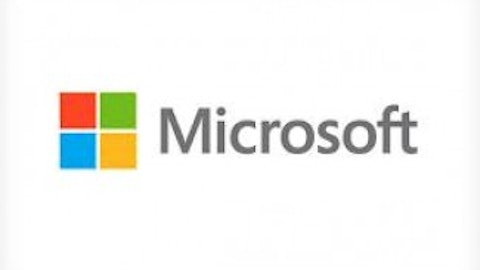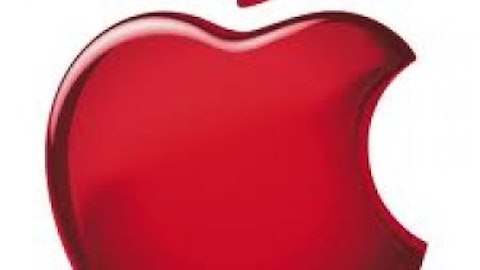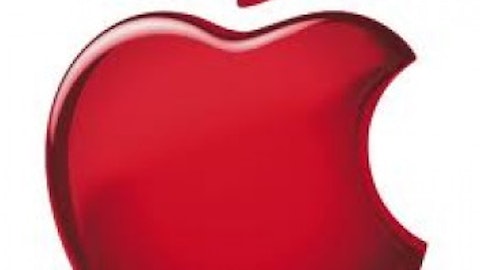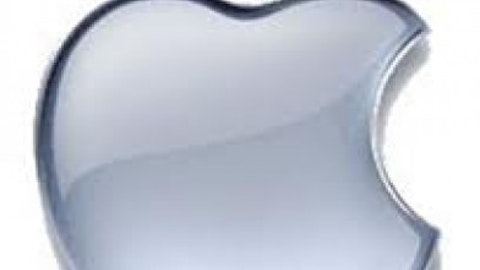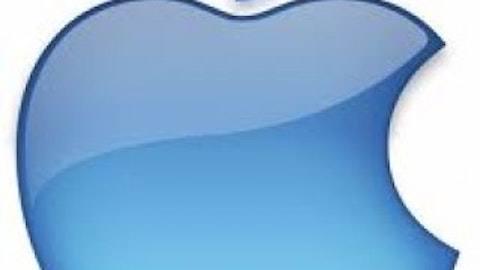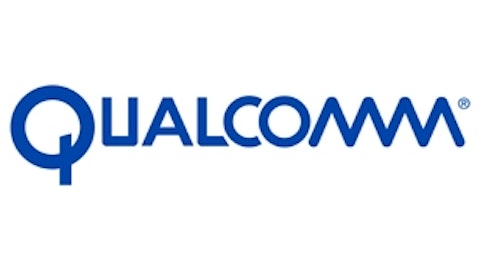Last year, things looked bleak for former handset heavyweight Nokia Corporation (ADR) (NYSE:NOK). The arrival of Apple Inc. (NASDAQ:AAPL)‘s iPhone in 2007 and Google‘s subsequent Android army had derailed Nokia Corporation (ADR) (NYSE:NOK)’s primary business and doomed it to obscurity alongside former smartphone market leader BlackBerry.
After former Microsoft Corporation (NASDAQ:MSFT) executive Stephen Elop took over as CEO in September 2010, however, Nokia Corporation (ADR) (NYSE:NOK)’s freefall stopped. After inking a partnership with Microsoft Corporation (NASDAQ:MSFT) that replaced its aging Symbian OS with Windows Phone, Nokia finally reclaimed a tiny niche slice of the smartphone market. Windows Phones, of which Nokia is the largest vendor at 80%, now have a rising 3.3% share of the smartphone market, according to the latest numbers from Gartner.
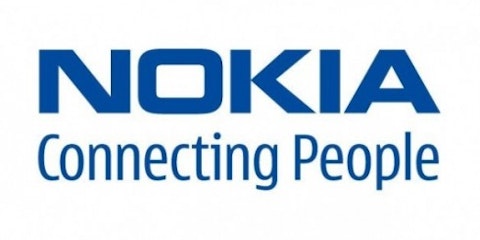
The biggest smartphone camera yet
In an effort to set itself apart from the competition, Nokia has put a heavy emphasis on creating a superior camera in comparison to current offerings from Apple Inc. (NASDAQ:AAPL) or Google’s hardware partners. Nokia Corporation (ADR) (NYSE:NOK)’s latest smartphone, the Lumia 1020, features a 41-megapixel camera with a mechanical zoom lens that completely blurs the lines between digital cameras and smartphones.
The Lumia 1020 is a polarizing product, with critics claiming that 41-megapixel lenses make for impractical file sizes that are ill-suited for sharing over the Internet. Fans believe that the 1020 could carve out a niche with hobbyist and professional photographers.
Either way, many investors are overlooking a possible, longshot application for Nokia’s 1020 — health care IT.
Smartphones as medical instruments
Most investors likely dismiss the idea of hospitals using the Lumia 1020 as a medical instrument to be silly conjecture.
iPhones and iPads are now frequently used in hospitals, however, accessing medical reference apps such as athenahealth‘s Epocrates and mobile electronic health record products like Allscripts‘ Wand. Many of these new medical apps use the camera to enhance productivity. Allscripts’ Wand for iPad, for example, allows clinicians to directly take photos for medical records and seamlessly catalog them into its EHR software.
Considering that the iPad is equipped with a 5-megapixel camera compared to the Nokia 1020’s 41-megapixel one, it’s possible that medical apps dependent on a mobile camera could function better on the latter. A 41-megapixel camera could take clearer close-up shots and be used as a more effective medical instrument, assuming that Nokia Corporation (ADR) (NYSE:NOK) and Microsoft Corporation (NASDAQ:MSFT) can attract more medical app developers.
3 major obstacles ahead
There are three major obstacles that Nokia and Microsoft will have to overcome to claim any sort of market share in the health care industry.
The first one is Microsoft Corporation (NASDAQ:MSFT) itself, which is attempting to convince health care professionals to use Windows 8 tablets instead of iPads to access reference and EHR apps. Nokia, on the other hand, is making an oddball Windows RT tablet, the Sirius, which will compete with the iPad, as well as other Windows 8 products.
Although Microsoft Corporation (NASDAQ:MSFT) CEO Steve Ballmer’s recent reorganization of his company aims to eventually unite Windows Phone, Windows RT, and Windows 8 with cross-compatible software, the three platforms are currently still under separate software umbrellas. The acquisition of Nokia might expedite the combination of both the software and hardware platforms, but the current lack of ecosystem unity makes Nokia’s phones and its upcoming tablet unattractive platforms to develop medical apps for.
The second obstacle is Apple Inc. (NASDAQ:AAPL). The iPad is the first choice of most physicians, with more than half of the 72% physicians using tablets in the U.S. favoring Apple’s seminal tablet, according to Manhattan Research. As a result, most health care apps are being developed for the iPad first.
Bring your own device, or BYOD, restrictions are the third major problem. Many hospitals restrict employees from bringing their own smartphones, tablets, or laptops to work for security reasons. This automatically keeps most non-iOS devices out of hospitals in America.
To boldly go where no smartphone maker has gone before…
Merely turning smartphones and tablets into medical devices is a short-sighted view of the industry. Over the past six years, smartphones unified an assortment of products — media players, PDAs, cameras, and ultraportable computers — into a single device. In the future, smartphones could merge with an assortment of medical devices as well into a new device — possibly like the medical tricorder from Star Trek.
The XPRIZE Foundation certainly believes that a medical tricorder could be created in the near future, and in conjunction with QUALCOMM, Inc. (NASDAQ:QCOM) offered a $10 million prize last year for the team that could produce a functioning tricorder. The winning tricorder will have to quickly scan a patient, summarize the patient’s health condition, display personal health metrics, monitor ongoing health, and diagnose common diseases.
Nokia Corporation (ADR) (NYSE:NOK) has also offered a $2.25 million XPRIZE challenge of its own, challenging teams to develop new hardware and software sensors to improve health care technologies. Some ideas that Nokia has presented include cancer detection devices, heart monitors synchronized to smartphones, fertility monitors, breath analyzers, and inner eye scanners.
Although QUALCOMM, Inc. (NASDAQ:QCOM) and Nokia’s targets are extremely lofty and ambitious, they represent a strong desire from both companies to advance health care IT to new sci-fi heights.
The Foolish bottom line
Nokia Corporation (ADR) (NYSE:NOK) and Microsoft Corporation (NASDAQ:MSFT) both still have a long way to go to regain their respective former glory in handsets and software. Yet the new technologies that the two companies have brought to the table raise interesting questions regarding the future of portable medical devices. Will iPads remain the de facto hardware device for medical practices, built on their robust foundation of app developers? Or will devices promoted by the XPRIZE Foundation force current mobile products to evolve into full-featured medical tricorders?
Either way, investors should look at modern smartphones as more than consumer communication products. A convergence of several more technologies might just be around the corner, and the health care IT industry could be a major beneficiary.
The article The Future of Smartphones in Health Care originally appeared on Fool.com and is written by Leo Sun.
Leo Sun owns shares of Apple and Nokia. The Motley Fool recommends Apple. The Motley Fool owns shares of Apple, Microsoft, and Qualcomm.
Copyright © 1995 – 2013 The Motley Fool, LLC. All rights reserved. The Motley Fool has a disclosure policy.
